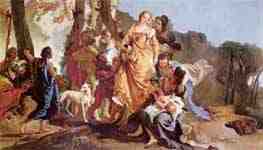.
Ο Τζιοβάνι Μπατίστα Τιέπολο, γνωστότερος ως Τζιανμπατίστα Τιέπολο (Giovanni Battista Tiepolo, γ. Βενετία, 5 Μαρτίου 1696, θ. Μαδρίτη, 27 Μαρτίου 1770) ήταν σημαντικός Ιταλός ζωγράφος του 18ου αιώνα, ο οποίος επανέφερε την μεγαλοπρέπεια της βενετσιάνικης τέχνης. Στα έργα του, τα οποία εκτελούσε με τρομερή ταχύτητα, ξαναζωντάνεψε την ιταλική παράδοση της τοιχογραφίας.

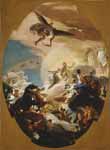
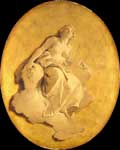
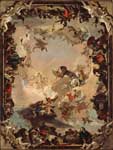
Allegory of the Planets and Continents
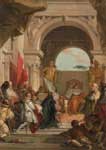
The Investiture of Bishop Harold as Duke of Franconia
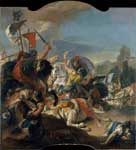
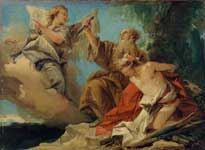
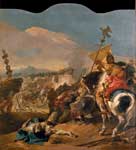

Vision of St. Clement (A Vision of the Trinity)

An Allegory with Venus and Time


Rinaldo turning in Shame from the Magic Shield


Seated Man, Woman with Jar, and Boy
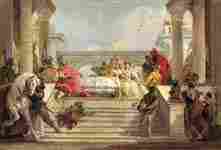

The Virgin and Child appearing to a Group of Saints


Two Orientals seated under a Tree
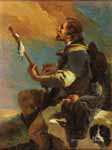
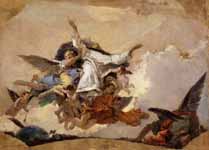
Sketch for The Glory of Saint Dominic
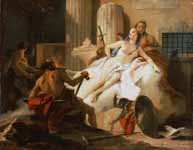
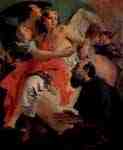
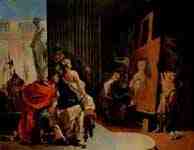
Alexander the Great and Campaspe in Apelles Studio


Apotheosis of the Pisani Family
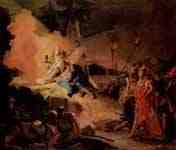
Christ on the Mount of Olives and the angel
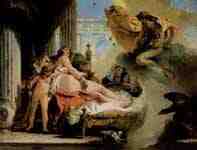
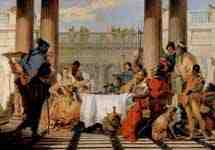
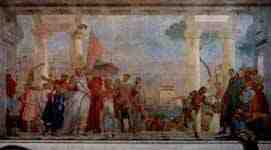
The reception of Henrich III .

The Pope Clement I prays to the Holy Trinity

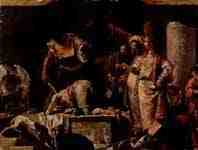
The Beheading of John the Baptist
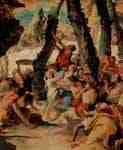

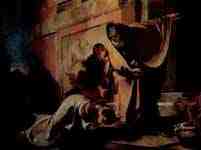
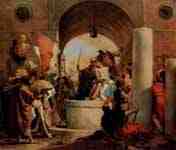

Apparition of the Virgin to St. Philip Neri ago


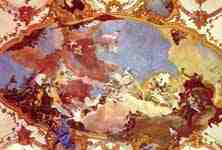
Würzburg: Friedrich Barbarossa and Beatrix of Burgundy
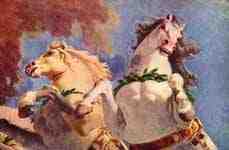
Würzburg : The Sun Horses of Apollo
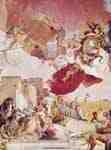
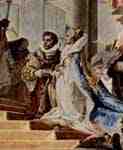
Würzburg : Frescoes in the imperial hall , detail

Würzburg : Frescoes in the imperial hall , detail
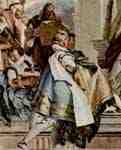
Würzburg : Frescoes in the imperial hall , detail
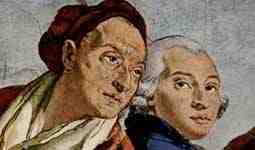
Würzburg : Frescoes in the stairwell , detail
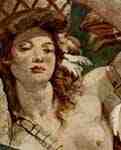
Würzburg : Frescoes in the stairwell , detail
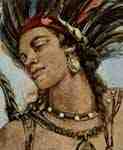
Würzburg : Frescoes in the stairwell , detail
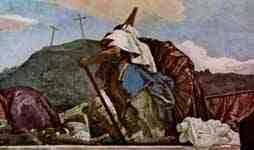
Würzburg : Frescoes in the stairwell , detail
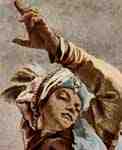
Würzburg : Frescoes in the stairwell , detail
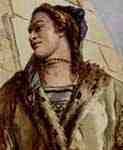
Würzburg : Frescoes in the stairwell , detail
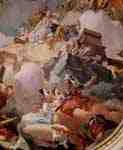
Apotheosis of the Spanish Royal Family
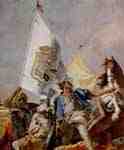

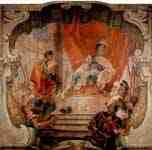

Villa Vallmarana : Aeneas presents Dido , detail
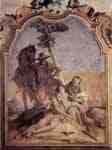
Villa Vallmarana : Angelica, accompanied by a shepherd

Villa Vallmarana : Angelica and Medorus
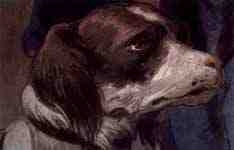
Villa Vallmarana : Greek fleet in Aulius , detail

Villa Vallmarana : Greek fleet in Aulius , detail

Villa Vallmarana : The Sacrifice of Iphigenia
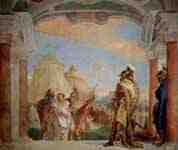
Villa Vallmarana : Agamemnon and Briseiis
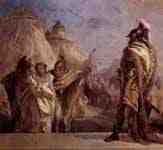
Villa Vallmarana : Agamemnon and Briseiis , detail
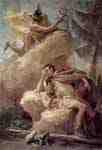
Villa Vallmarana : Mercury appears to Aeneas
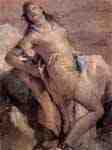
Villa Vallmarana : Minerva and Achilles

Villa Vallmarana : Rinaldo and Ubaldo
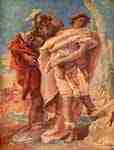
Villa Vallmarana : Rinaldo and the old warrior , detail
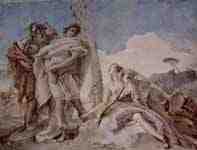
Villa Vallmarana : Rinaldo leaves Armida
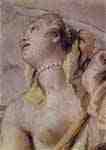
Villa Vallmarana : Rinaldo leaves Armida , detail
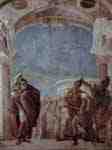
Villa Vallmarana : Ruggero freed Angelica , detail
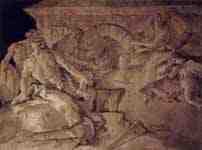
Villa Vallmarana : Venus Asks Vulcan for armor
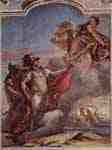
Villa Vallmarana : Venus leaves Aeneas and Acatus

Bishop's Palace in Undine : Solomon's judgment
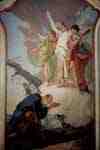
Bishop's Palace in Undine : Abraham and the angels
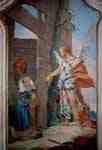
Bishop's Palace in Undine : Sarah and the Angel
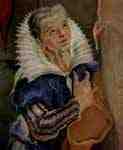
Bishop's Palace in Undine : Sarah and the Angel , detail

Bishop's Palace in Undine : Rachel hides the idols

Bishop's Palace in Undine : Rachel hides the idols , detail
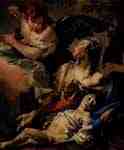
Hagar and Ishmael counterpart to " Abraham and the Angels "

Hannibal sees the head of Hasdrubal

St. Thekla Este freed from the plague
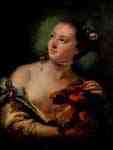
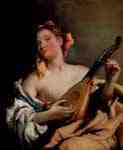
Young female singer with Mandolin
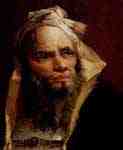
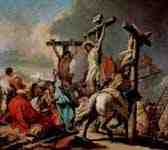
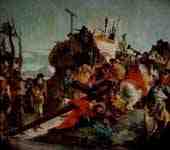
Way of the Cross of Christ to Calvary
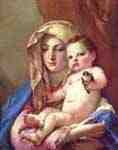


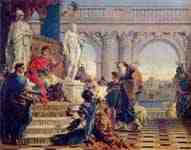
Maecenas Presenting the Liberal Arts to Emperor Augustus

Neptune provides the city of Venice offerings
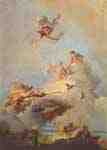
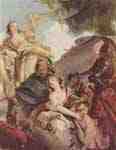
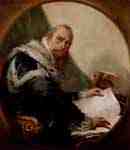
Portrait of Antonio Riccobono , fragment

Portrait of an authorized officer
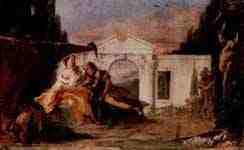
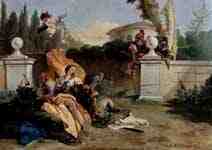
Rinaldo and Armida are surprised
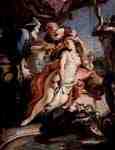


Meeting of Marc Antony and Cleopatra
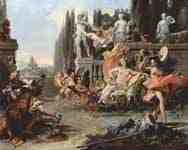
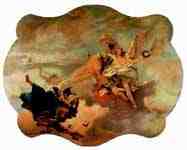
Triumph of Fortitude and the Sapienzia
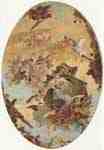
Transportation of the Holy House
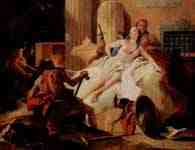
Drawings

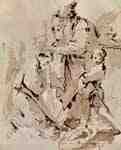
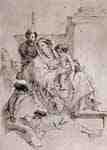
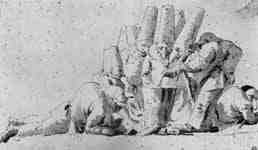


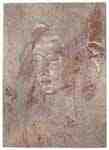
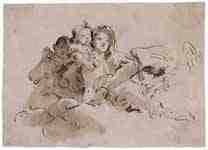
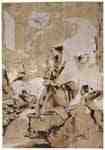
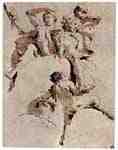
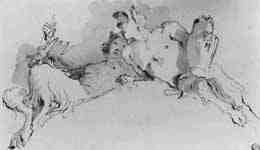
Βιογραφία
Ο Τζιανμπατίστα Τιέπολο γεννήθηκε στη Βενετία στις 5 Μαρτίου του 1696. Ο πατέρας του Ντομίνικο είχε ένα εμπορικό πλοίο αλλά πέθανε όταν ο Τζιανμπατίστα ήταν ενός έτους, αφήνοντας την χήρα Ορσόλα να μεγαλώσει έξι παιδιά με ένα πενιχρό εισόδημα. Ο νεαρός Τιέπολο μαθήτευσε στον Γκρεγκόριο Λατζαρίνι (1655-1730), αλλά γρήγορα υιοθέτησε έναν τρόπο γρήγορο και ελεύθερο. Από την αρχή ο Τιέπολο μπορούσε να σχεδιάζει γρήγορα και χωρίς ιδιαίτερη προσπάθεια.
Τιέπολο: Η Ραχήλ κρύβει τα είδωλα. Τοιχογραφία στο Ούντινε
Σε ηλικία 20 ετών ο Τιέπολο, που είχε ήδη αρχίσει να δουλεύει μόνος του, κέρδισε σε έναν διαγωνισμό με το έργο "Το Πέρασμα της Ερυθράς Θάλασσας". Ο πίνακας αυτός τον έκανε διάσημο και ακολούθησαν πάρα πολλές παραγγελίες, συμπεριλαμβανομένων κάποιων από τους Δόγηδες, αλλά είχε ελάχιστα επίσημα συμβόλαια από τη Βενετσιάνικη Δημοκρατία. Το 1717 έγινε μέλος της "Φράλια" (Fraglia), του σωματείου των ζωγράφων και το 1719 παντρεύτηκε την Σεσίλια Γκουάρντ, αδελφή των ζωγράφων Τζαναντόνιο και Φραντσέσκο. Αν και ποτέ δεν έκανε το πορτραίτο της, την απεικόνιζε συνεχώς σε έργα όπως "Η Ραχήλ κρύβει τα Είδωλα". Έκαναν 10 παιδιά, δύο από τα οποία έγιναν ζωγράφοι: ο Τζιαντομένικο (1727-1804) και ο Λορέντσο (1736-1776).
Έργο
Γύρω στο 1725 ο Τιέπολο κλήθηκε από τον Αρχιεπίσκοπο του Ούντινε να διακοσμήσει την πινακοθήκη του Αρχιεπισκοπικού Μεγάρου με τοιχογραφίες από την Βίβλο. Τα έργα αυτά είναι τα πρώτα πραγματικά αριστουργήματα καλλιτεχνικής έκφρασης στα οποία ήταν αξεπέραστος. Η τοιχογραφία απαιτούσε ταχύτητα σκέψης και εκτέλεσης και ο Τιέπολο διέθετε και τα δύο με το παραπάνω. Η μεγαλύτερή του παραγγελία στο τέλος της δεκαετίας του 1740 ήταν να ζωγραφίσει τοιχογραφίες στο Μέγαρο των Λάμπια στη Βενετία. Εδώ δημιούργησε την μεγαλύτερη και πιο γνωστή από τις παραλλαγές του "Αντώνιος και Κλεοπάτρα". Η χλιδή του θέματος - μαργαριτάρια, χρυσό και μετάξι - αντανακλούσε τα ανερχόμενα πλούτη και την δόξα του Τιέπολο.
Το 1736 απέρριψε μια προσφορά της Βασιλικής Αυλής στη Στοκχόλμη, λέγοντας ότι το ποσό που του προσέφεραν ήταν πολύ μικρό. Το 1750 δέχτηκε μια παραγγελία από τον Πρίγκηπα-Επίσκοπο του Βίρτσμπουργκ στην Κεντρική Γερμανία για να διακοσμήσει την κατοικία του. Ξεκινώντας από την Τραπεζαρία και προχωρώντας προς το Κλιμακοστάσιο, πέρασε τρία χρόνια δημιουργώντας μεγάλες αλληγορικές σκηνές γεμάτες φως και χρώμα. Στα τέλη του 1753 επέστρεψε στη Βενετία και άρχισε να διακοσμεί επαύλεις με τοιχογραφίες. Έκανε επίσης προσωπογραφίες σε όλη την διάρκεια της καριέρας του, μερικών σπουδαίων αξιωματούχων.
Το 1761 προσκλήθηκε από τον Κάρολο Γ' της Ισπανίας να του διακοσμήσει το καινούριο βασιλικό ανάκτορο στη Μαδρίτη. Ο Τιέπολο, εξήντα ετών ήδη, στην αρχή δίστασε αλλά θαμπωμένος από την δόξα, δέχθηκε τελικά και ταξίδεψε για την Ισπανία με τους γιους του, την άνοιξη του 1762.
Ο Τιέπολο δεν επέστρεψε ποτέ στη Βενετία. Πέθανε ξαφνικά στις 27 Μαρτίου 1770 και θάφτηκε στην εκκλησία του Σαν Μαρτίν.
Hellenica World - Scientific Library
Από τη ελληνική Βικιπαίδεια http://el.wikipedia.org . Όλα τα κείμενα είναι διαθέσιμα υπό την GNU Free Documentation License


